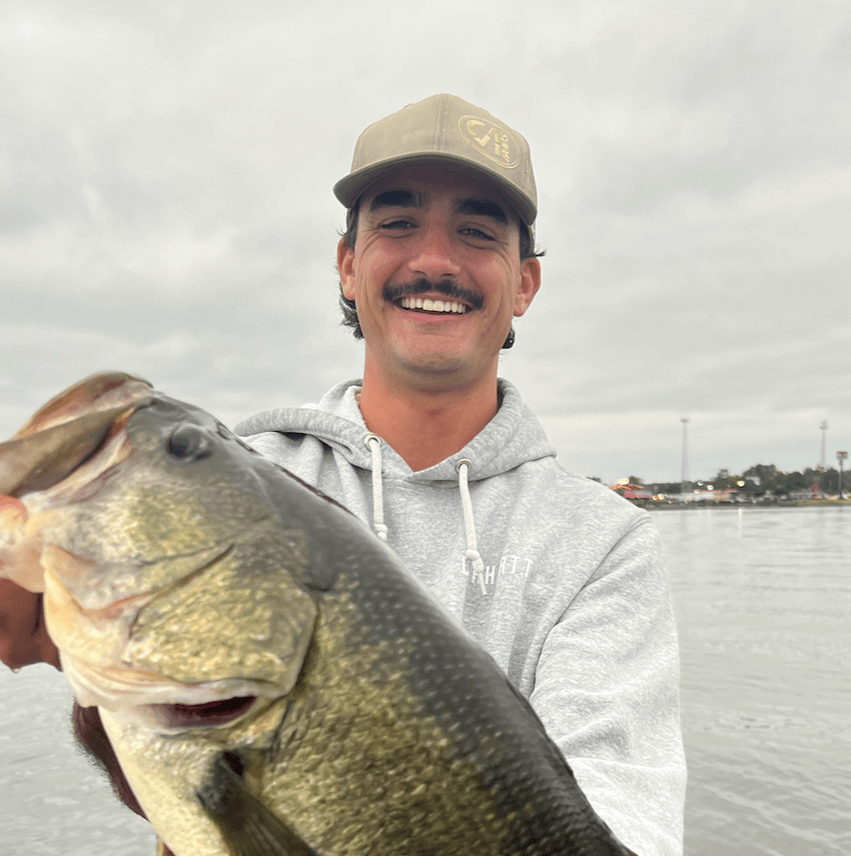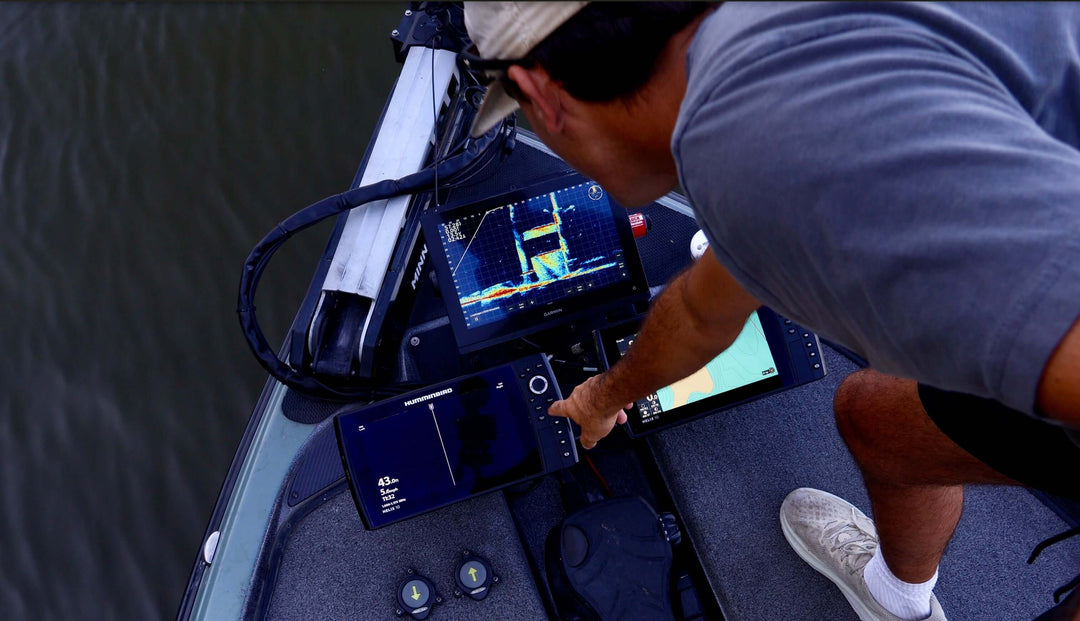The Best Mounting Options for Garmin LiveScope: Pole Mount, Turret Mount, or Trolling Motor Shaft?

Choosing the right mounting option for your Garmin LiveScope can make a big difference in how you scan for fish, track your lure, and adjust your transducer while on the water. The three most common mounting options are:
- Pole Mount – A manually controlled, independent mount
- Turret Mount – A motorized mount that moves separately from the trolling motor
- Trolling Motor Shaft Mount – Attaches directly to the trolling motor, moving wherever the motor turns
Each has advantages and drawbacks depending on your fishing style, boat setup, and how you use LiveScope. Here’s a breakdown of the pros and cons of each mounting style to help you decide which one works best for you.
Pole Mount: Independent and Manually Controlled
How It Works
A pole mount is an independent mount that allows you to manually control the direction of your LiveScope transducer. It is usually positioned on the side of the boat and operated by hand.
Pros:
✔ Independent of Trolling Motor – Can scan in any direction without affecting boat positioning.
✔ Great for Spot-Locked Fishing – If you use Spot-Lock on your trolling motor, you can still control the LiveScope separately.
✔ Precise Scanning – Lets you pan around without moving the boat.
✔ Good for Ice Fishing – Allows you to manually control sonar direction through the ice.
Cons:
✖ Requires Manual Operation – You must adjust the pole by hand, which takes time away from fishing.
✖ Takes Up Deck Space – The pole can get in the way, especially in smaller boats.
✖ Less Convenient in Wind or Current – Adjusting the transducer manually while managing boat position can be difficult.
Best For:
- Anglers who use Spot-Lock frequently and need independent control of their LiveScope.
- Fishermen who want to scan around structure without moving the boat.
- Ice fishing setups where a trolling motor mount isn’t an option.
Turret Mount: Motorized & Independent Control
How It Works
A turret mount is a motorized mount that holds the LiveScope transducer separately from the trolling motor. It is controlled by a foot pedal, remote, or switch, allowing hands-free scanning.
Pros:
✔ Hands-Free Operation – Allows you to adjust LiveScope direction without taking your hands off the rod.
✔ Works with Spot-Lock – Like a pole mount, it moves independently from the trolling motor.
✔ Smooth, Precise Adjustments – The motorized system lets you scan smoothly in small increments.
✔ Faster Scanning – Can quickly rotate the transducer to scan more water.
Cons:
✖ More Expensive – Turret mounts cost more than pole mounts or trolling motor shaft mounts.
✖ Additional Power Draw – Requires a power source, usually from the boat battery.
✖ Another Piece of Equipment to Maintain – Moving parts mean more potential for mechanical issues.
Best For:
- Tournament anglers who need quick, hands-free adjustments.
- Fishermen who want independent control of LiveScope without using their hands.
- Anglers who use Spot-Lock often but still want to scan around structure.
Trolling Motor Shaft Mount: Simple & Always Moving
How It Works
A trolling motor shaft mount attaches the LiveScope transducer directly to the trolling motor. Wherever the trolling motor turns, the transducer moves with it.
Pros:
✔ Simplest Setup – No extra mounts or motors needed.
✔ Moves with Your Trolling Motor – If you’re steering and fishing simultaneously, LiveScope follows your movements.
✔ No Extra Cost – Comes standard with many LiveScope transducers.
✔ Works Well for Active Scanning – Great for covering water and tracking fish while moving.
Cons:
✖ Moves with the Trolling Motor – You can’t scan around freely while Spot-Locked.
✖ Less Precision – If you need to scan left or right, you have to move the entire boat.
✖ Can Create Turbulence Issues – Sonar image can be affected by trolling motor thrust or prop wash.
Best For:
- Anglers who constantly move and scan for fish rather than staying stationary.
- Shallow-water fishermen who use the trolling motor for maneuvering around cover.
- People who don’t use Spot-Lock often and prefer a simple, straightforward setup.
Which Mounting Option is Best for You?
| Mount Type | Best For | Downsides |
|---|---|---|
| Pole Mount | Spot-Lock users, precise scanning, ice fishing | Requires manual adjustments, takes up deck space |
| Turret Mount | Tournament anglers, hands-free scanning, smooth panning | More expensive, requires power, more maintenance |
| Trolling Motor Shaft | Active scanning, moving while fishing, simple setup | Moves with trolling motor, not ideal for Spot-Lock |
Final Thoughts
Choosing the right LiveScope mount depends on your fishing style:
- If you use Spot-Lock a lot, go with a pole mount or turret mount so you can scan freely.
- If you want hands-free scanning, a turret mount or trolling motor shaft mount is the best choice.
- If you prefer a simple, always-moving setup, a trolling motor shaft mount works well.
Each option has strengths and weaknesses, so consider how you fish, how much control you want, and whether you need independent movement from your trolling motor.
No matter which installation method you choose, make sure to adjust your installation depth and AHRS/pitch angle accordingly.






